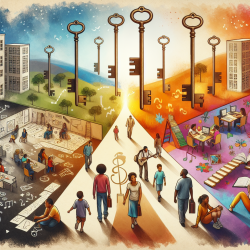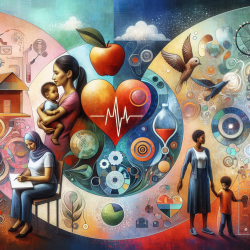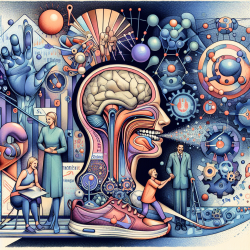Introduction
In the realm of speech-language pathology, we often focus on the home and school environments when considering factors that influence child development. However, a recent study titled Sociospatial Disparities in “Third Place” Availability in the United States sheds light on an often-overlooked element: "third places." These are spaces beyond home and work that facilitate social interaction and community engagement. Understanding the distribution and impact of these places can be pivotal for practitioners aiming to improve outcomes for children.
What Are "Third Places"?
Third places include environments such as libraries, community centers, coffee shops, and parks where individuals can gather, socialize, and build social capital. These spaces are crucial for community cohesion and can significantly impact social mobility, particularly in marginalized communities.
Key Findings from the Research
The study, conducted using tract-level data from the National Neighborhood Data Archive, reveals significant disparities in the availability of third places across the United States. Here are some critical insights:
- Poverty and Third Places: Higher poverty rates correlate with fewer third places, limiting opportunities for social interaction and mobility.
- Racial/Ethnic Disparities: Areas with smaller shares of Black and Hispanic populations have more third places, though this disadvantage is not linear.
- Rural vs. Urban: Rural areas generally have fewer third places, except in the most isolated tracts, which surprisingly have more.
Implications for Practitioners
As practitioners, understanding the role of third places can enhance our strategies for supporting child development. Here’s how you can leverage these insights:
- Community Engagement: Encourage families to utilize local third places to build social networks and access resources.
- Advocacy: Work with local governments and organizations to increase the availability of third places in underserved areas.
- Research and Collaboration: Partner with researchers to explore the impact of third places on child development further.
Encouraging Further Research
The study highlights the need for more research into how third places can serve as equalizers in disadvantaged communities. Practitioners are encouraged to explore how these spaces can be integrated into therapeutic practices and community programs to support children's social and cognitive development.
Conclusion
Third places are more than just physical spaces; they are vital components of a community's social infrastructure. By understanding and leveraging these spaces, practitioners can play a crucial role in enhancing social mobility and improving outcomes for children, particularly in marginalized communities.
To read the original research paper, please follow this link: Sociospatial Disparities in “Third Place” Availability in the United States.










